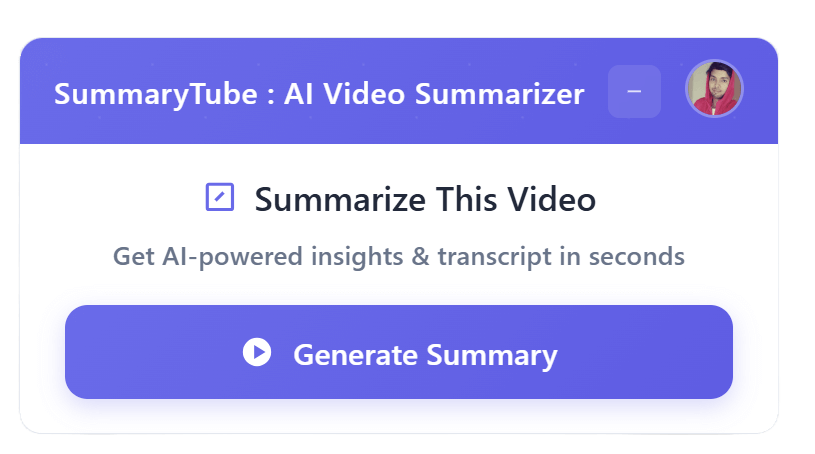TBD Q3 TSR Data Visualization by Mark (Part 1)
By QA TBD
Published Loading...
N/A views
N/A likes
AI Summary of "TBD Q3 TSR Data Visualization by Mark (Part 1)"
Get instant insights and key takeaways from this YouTube video by QA TBD.
Data Visualization Fundamentals
📊 Transform raw data into visuals (graphs, charts) to quickly spot patterns, trends, and insights that are not obvious in tables.
📈 Utilize common tools like MS Excel, Google Sheets, PowerBI, and even programming languages like Python for data transformation.
💡 Data visualization is crucial for revealing patterns, improving decision-making, enhancing communication (stories are remembered better), and saving time by summarizing large datasets instantly.
Mastering Excel/Google Sheets for Data Analysis
🛠️ Utilize Pivot Tables to summarize and analyze large datasets, stressing the importance of clear column headers for proper function.
🎯 Employ Slicers for instant, interactive filtering of pivot tables and Pivot Charts for dynamic, automatically updating data visualizations connected to your pivot table.
📈 Enhance chart readability by adding data labels for exact values, renaming, and removing field buttons for a cleaner, professional look.
🔄 Remember to refresh all pivot tables (Data tab) after any raw data updates (new entries or columns) to ensure data accuracy and inclusion.
Effective Data Storytelling
🗣️ Combine data, visuals, and narrative to turn raw information into meaningful insights and actionable reports.
❓ Your narrative should explain the "what" and "why" behind data trends, addressing questions like what errors need improvement or what caused performance drops.
🚀 Structure your reports by starting with the overall performance (e.g., overall outbound call disclosure compliance score of 99.42%).
🔎 Drill down into details by time, team, or category, highlighting significant changes (e.g., a 1.27% drop in compliance from June to July) and their root causes.
✅ Conclude reports with clear insights and recommended actions (e.g., QA team to submit at least two evaluations per day for new hires, weekly call listening sessions).
Key Points & Insights
➡️ Data visualization is essential for transforming complex raw data into understandable, actionable insights.
➡️ Pivot tables, slicers, and pivot charts in Excel/Google Sheets are integrated tools that enable dynamic data analysis and interactive reporting.
➡️ A compelling narrative is crucial; it converts charts from mere pictures into stories that drive decision-making by explaining trends and suggesting actions.
➡️ Always structure your report from a high-level overview to specific details, ensuring you explain changes and provide actionable recommendations.
➡️ Maintain data integrity by ensuring clear headers and refreshing pivot tables whenever the underlying raw data is modified.
📸 Video summarized with SummaryTube.com on Sep 25, 2025, 07:59 UTC
Related Products
Find relevant products on Amazon related to this video
As an Amazon Associate, we earn from qualifying purchases
📜Transcript
Loading transcript...
📄Video Description
TranslateUpgrade
This youtube video does not contain any description text added by video uploader
Full video URL: youtube.com/watch?v=3sfkr-InJQs
Duration: 41:31
Recently Summarized Videos
Total Video Summary Page Visits :4
AI Summary of "TBD Q3 TSR Data Visualization by Mark (Part 1)"
Get instant insights and key takeaways from this YouTube video by QA TBD.
Data Visualization Fundamentals
📊 Transform raw data into visuals (graphs, charts) to quickly spot patterns, trends, and insights that are not obvious in tables.
📈 Utilize common tools like MS Excel, Google Sheets, PowerBI, and even programming languages like Python for data transformation.
💡 Data visualization is crucial for revealing patterns, improving decision-making, enhancing communication (stories are remembered better), and saving time by summarizing large datasets instantly.
Mastering Excel/Google Sheets for Data Analysis
🛠️ Utilize Pivot Tables to summarize and analyze large datasets, stressing the importance of clear column headers for proper function.
🎯 Employ Slicers for instant, interactive filtering of pivot tables and Pivot Charts for dynamic, automatically updating data visualizations connected to your pivot table.
📈 Enhance chart readability by adding data labels for exact values, renaming, and removing field buttons for a cleaner, professional look.
🔄 Remember to refresh all pivot tables (Data tab) after any raw data updates (new entries or columns) to ensure data accuracy and inclusion.
Effective Data Storytelling
🗣️ Combine data, visuals, and narrative to turn raw information into meaningful insights and actionable reports.
❓ Your narrative should explain the "what" and "why" behind data trends, addressing questions like what errors need improvement or what caused performance drops.
🚀 Structure your reports by starting with the overall performance (e.g., overall outbound call disclosure compliance score of 99.42%).
🔎 Drill down into details by time, team, or category, highlighting significant changes (e.g., a 1.27% drop in compliance from June to July) and their root causes.
✅ Conclude reports with clear insights and recommended actions (e.g., QA team to submit at least two evaluations per day for new hires, weekly call listening sessions).
Key Points & Insights
➡️ Data visualization is essential for transforming complex raw data into understandable, actionable insights.
➡️ Pivot tables, slicers, and pivot charts in Excel/Google Sheets are integrated tools that enable dynamic data analysis and interactive reporting.
➡️ A compelling narrative is crucial; it converts charts from mere pictures into stories that drive decision-making by explaining trends and suggesting actions.
➡️ Always structure your report from a high-level overview to specific details, ensuring you explain changes and provide actionable recommendations.
➡️ Maintain data integrity by ensuring clear headers and refreshing pivot tables whenever the underlying raw data is modified.
📸 Video summarized with SummaryTube.com on Sep 25, 2025, 07:59 UTC
Related Products
Find relevant products on Amazon related to this video
As an Amazon Associate, we earn from qualifying purchases
Loading Similar Videos...
Recently Summarized Videos

Get the Chrome Extension
Summarize youtube video with AI directly from any YouTube video page. Save Time.
Install our free Chrome extension. Get expert level summaries with one click.